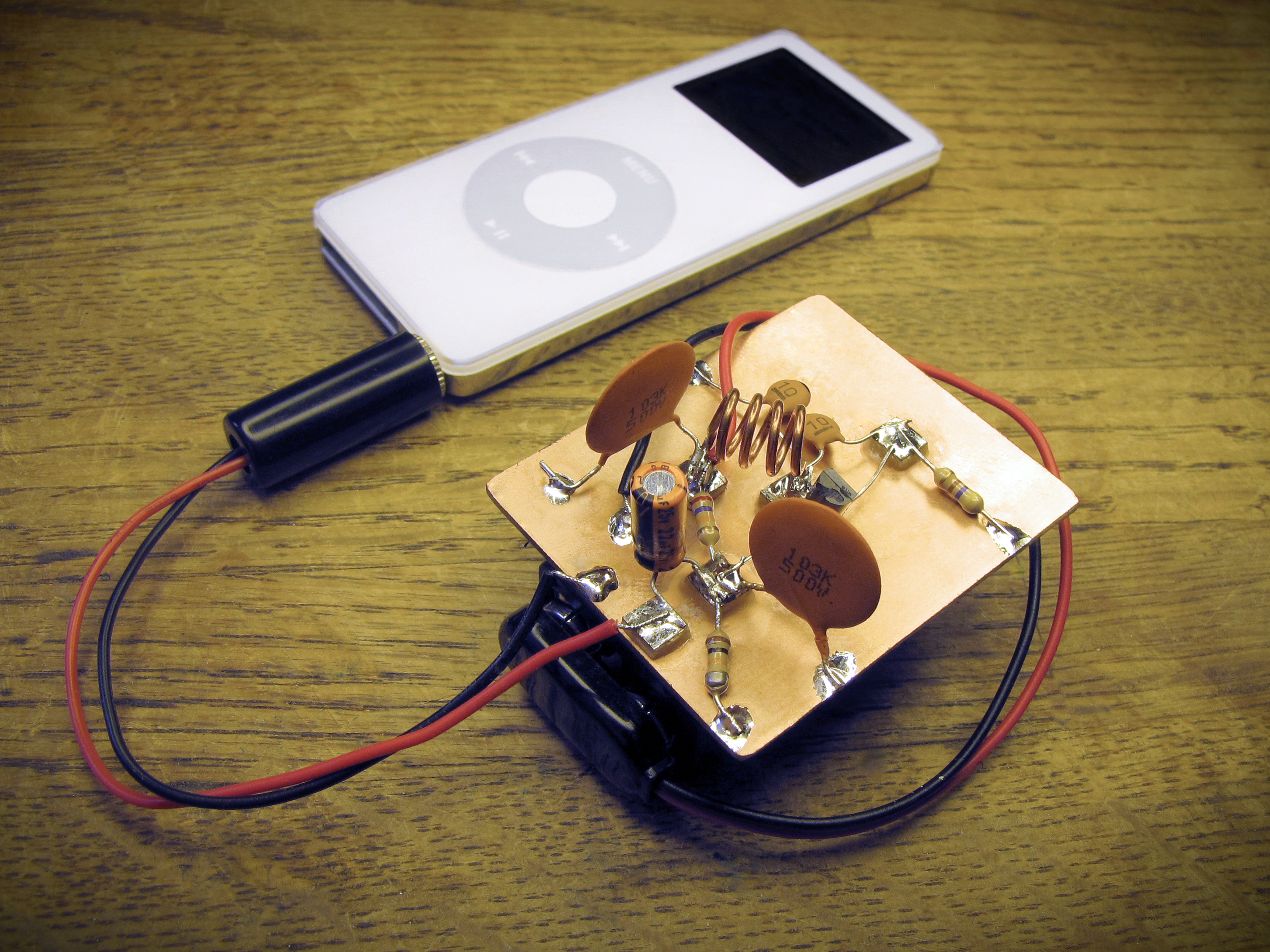
FM transmitters can be complicated to build, but not this one — this iPod FM transmitter about the easiest you can possibly make. And though the science of radio is well understood, there’s a magical, emotional quality about it that we don’t often stop to appreciate. You will not forget the first time you pick up a transmission broadcast from a device you soldered together, yourself, from a few bits of copper, carbon, plastic, and wire.
I am indebted to Jim and Kat of Sonodrome for first introducing me to that experience, through this very circuit, which I first built on a pre-etched PCB from a kit they offered for sale as recently as 2011.
This design was originally popularized by Japanese multimedia artist Tetsuo Kogawa. The circuit itself is a slight variation on Kogawa’s simplest FM transmitter design, and the method of building it is sometimes referred to as “Manhattan style.” It uses a piece of copper-clad circuit board but, rather than etching the circuit traces through the copper layer, a large piece of continuously-plated board is used to make all the circuit’s ground connections, and small sections of plated board are glued to the surface to form nodes or “pads” that are insulated from ground. Besides being a convenient way to assemble circuits using minimal tools, this building method encourages you to think about circuits in an interesting way — as groups of connections that are either grounded or “floating above” ground.
This transmitter uses ten on-board components and will transmit a monaural audio signal about 30 feet. It is possible to extend that range by adding an antenna, and Mr. Kogawa’s website has more information about how to do that.
NOTE: Depending on where you live, operating an FM transmitter — even a very short-range one like this — may be illegal without a license. Unless you attach an antenna, it’s very unlikely that anyone will notice or complain about any transmissions you may make with this device. On the other hand, it’s very difficult to predict, before construction is complete, just where on the FM band this transmitter will broadcast. Use due caution during testing, and make sure you understand the law in your area before attaching the battery.





